Bauerfeind – Nowitzki & Co. – SAP EWM ensures movement
Bauerfeind employs the SAP expertise of IGZ in its central warehouse
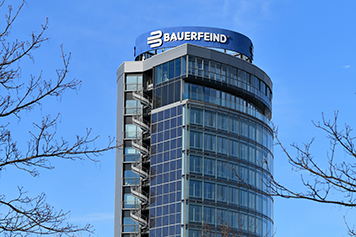
Together with its brand ambassador Dirk Nowitzki, Bauerfeind AG has successfully replaced a complex warehouse management and control system at its central warehouse in Zeulenroda-Triebes and put it on a future-proof footing with SAP EWM including SAP MFS. Thanks to IGZ’s implementation, the manufacturer of bandages, orthoses, compression stockings and orthopaedic insoles now benefits from a high-performance overall solution in conjunction with SAP ERP.
When Bruno Bauerfeind founded a company to produce rubber knitwear and bandages in 1929, he couldn’t have imagined the rapid development his company would undergo in the following decades. Today, 90 years later, Bauerfeind AG has a global presence with 20 subsidiaries and more than 70 affiliated distributors. The products also supported the athletes at the 2018 Winter Olympics in Pyeongchang, South Korea, where, for example, Bauerfeind’s orthopaedic technicians for sport treated participants from all nations. The company, which is still family-owned, produces exclusively in Germany. The products are partly handmade. Around 2000 employees worldwide drive Bauerfeind’s idea of "Motion is Life" and successfully implement it. This maxim is promoted in the media by brand ambassador and NBA basketball all-star Dirk Nowitzki, who also loves Bauerfeind products.
Supply reliability has top priority
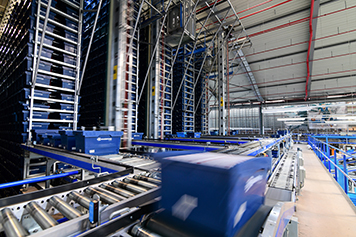
Round-the-clock availability and free hotlines are part of Bauerfeind's service promise. The company guarantees that in-stock goods ordered by 3 p.m. will be shipped to medical supply stores, pharmacies, hospitals and end customers on the same day. If necessary, it also offers express production and delivery. Its process requirements are correspondingly high – especially for logistics.
The best possible supply reliability is guaranteed via the Bauerfeind central warehouse in Zeulenroda, Thuringia. In operation since 2003, it stores around 8000 m2 of finished products in a highly automated container warehouse (ASPW) with approximately 40,000 storage areas and prepares them for the fastest possible dispatch after order receipt. However, the logistics that had grown up over the years was characterised by a high degree of heterogeneity. For example, the warehouse management system and the warehouse control system came from two different suppliers. In particular, the warehouse management software had been constantly adapted to new customer requirements over the years and a large number of interfaces now existed that were time-consuming and expensive to support. Functional upgrades could not be implemented or could only be done so with a corresponding amount of risk. "The old software had to be replaced, as maintenance, continuing development and support were no longer guaranteed and there was a risk of downtime. Due to its importance for customers, logistics was essentially classified as a high risk factor that had to be reduced," reports IT manager Lorenz Müller.
Consistent continuation of the SAP strategy in logistics
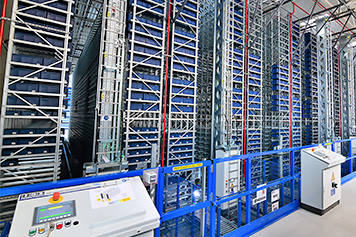
"In order to maintain our supply capability and competitive ability, a new system integrated with SAP was also advantageous as a logical continuation of the SAP strategy we began in 2003," adds Holger Wohlrabe, Team Leader SAP Application Support SCM at Bauerfeind. After all, he says, SAP EWM is a proven, fully integrated and future-proof SAP standard solution, which is also represented by a broad community; this means that dependencies on software providers, as has been the case up to now, could be eliminated. After a thorough market analysis, an extensive comparison of providers and the completion of a rough concept phase, Bauerfeind commissioned the IGZ specialists from Falkenberg in the Upper Palatinate to implement this important logistics migration project.
"As a leading SAP-EWM partner, we know that switching to a new software solution not only involves technical challenges, but also and in particular organisational challenges," notes IGZ division manager Maximilian Heinzl. For these kinds of switchover, it is therefore crucial that companies provide qualified resources the at staff level who can manage the switchover in addition to their day-to-day activities." In addition to this, the necessary integration and load tests under real conditions can usually only be carried out during non-operational periods. In a multi-shift operation, as is the case at Bauerfeind, this is a special challenge that requires precise project and migration planning.
Go-live successfully mastered together
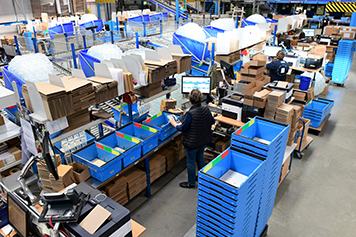
In Bauerfeind’s case, a time window of 15 months was defined for the overall project. Within this period, the specifications were created, agreed and released, the implementations of all processes from goods receipt to dispatch were mapped in SAP EWM, the material flow was mapped in SAP MFS and the SAP ERP adjustments were completed. The functional and integration tests were successfully completed at the beginning of 2018, ensuring the go-live could follow at the end of May. "For our colleagues from logistics and IT who were involved in this, it was a tour-de-force alongside regular logistics operations," says IT manager Lorenz Müller, describing the switchover process. "They worked 12 days on weekends and over Whitsun and they also worked overnight," the SAP-EWM project manager adds. But their efforts, and the strict adherence to the tight schedule, paid off: one of the most important IT projects in Bauerfeind IT’s history was implemented on schedule, and the new software allows all logistical processes at Bauerfeind to be effectively controlled and mapped transparently.
"Despite the tour-de-force, Bauerfeind and IGZ together succeeded in securing almost 100% of the dispatch service in the very first days after the switchover." The comprehensive, meticulously designed test phase in the run-up to commissioning also contributed to this. Among other things, IGZ provided professional in-house emulation tools to test all plant functions and processes in SAP EWM and the material flow with SAP MFS without having to resort to the productive logistics system. Until go-live, fallback strategies made it possible to switch back to the old system in an emergency. After the go-live and hypercare phases went according to plan, this step was not necessary.
Complex processes mapped end-to-end
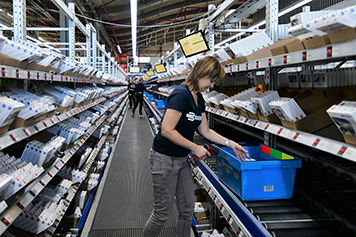
Thousands of packages and pallets leave the Bauerfeind central warehouse every day. These are picked in the ASPW pre-zone, where the six storage and retrieval machines present items that can be stored in containers. The orders are completed via interaction of several picking stations following the pass-on principle. These include picking stations integrated in SAP EWM with 3000 throughput channels, all equipped with Pick-by-Light displays, some of which are automatically replenished from the ASPW. Finished order containers finally arrive at the packing stations via the conveyor network in accordance with predefined cut-off times, where a wide variety of dispatch service providers and services can be selected depending on customer requirements. Specific packing stations are available for both package delivery service providers and freight forwarders. In addition, there are four further workstations where bulky goods are handled. IGZ provided Best Practice in SAP EWM for the packing and shipping processes and for the direct SAP integration of the total of 30 shipping services, eliminating Bauerfeind’s dependence on the service providers' subsystems to create shipping labels. Once they have been captured by the omniscanner, SAP MFS directs the parcels to the automatic shipping chutes and loading ramps completely automatically.
"Bauerfeind's processes are characterised by a high degree of complexity; after all, delivery quality is the top priority and customers are offered a wide variety of services," explains IGZ Division Manager Maximilian Heinzl. "Shipping service providers vary by country. As a result, widely varying and changing cut-off times must be considered." Today, these are mapped in SAP EWM, as are a large number of customised special processes that are controlled exclusively by SAP MFS in terms of material flow. From A to Z, SAP EWM/MFS ensures a smooth flow of information and goods across all areas of the central warehouse. Be it in the ASPW picking, where the containers are fed to the employees according to the "goods-to-person" principle, or in the live storage, with picking stations according to the "person-to-goods" principle and forwarded order containers. Manually operated bay storage areas, in which pallet goods are stocked, or picking areas for custom-made therapy products (make-to-order production) are also shown. In the manually operated areas, the order pickers are guided exclusively via MDA devices. In conjunction with scanning processes used in all work areas, keyboard input or touchscreens can be dispensed with, meaning that jobs are processed quickly and at the same time reliably. SAP EWM also supports extensive monitoring functions for group and warehouse control, which enable early detection when conveyor routes are heavily utilised. This makes it possible to react at an early stage to ensure that overload situations do not occur in the plant.
Solid basis for continuous further development
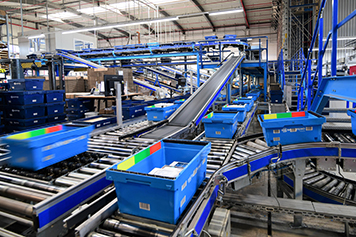
In Bauerfeind’s case, the frequently used slogan "The customer takes centre stage" is established practice. After all, the focus here is on human health. Performance measurement for logistics based on the factor of "delivery punctuality" is therefore essential. Incorrect or late deliveries can, in the worst case, have a direct impact on the physical condition of a patient who is in urgent need of this aid.
After migrating to a uniform software solution in the area of warehouse management, Bauerfeind can now implement new requirements of its end customers quickly and effectively with SAP EWM. "We've improved transparency and consistency at the level of master and transaction data, and now only have to manage one system," Lorenz Müller notes. There is now also one central contact person for all matters at warehouse management and control level. Thanks to continuous functional enhancements on the part of SAP, accessing the logistical standards of the future is practically automatic. The software can also be rolled out to other locations and, thanks to standard interfaces, facilitates the connection of other storage and conveyor systems, regardless of which technology provider supplies them. It is also conceivable, for example, to integrate the production supply warehouse, which was previously managed in WM, into SAP EWM. At the same time, the migration to SAP EWM created the prerequisites for being able to exploit the advantages of the HANA in-memory database in the best possible way and to consistently pursue the path towards ERP migration on SAP S4/HANA.
Back to overview

